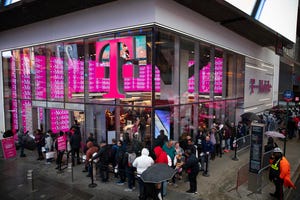October 4, 2011

LONDON -- Packet Microwave Forum -- Whichever technology will be used to backhaul small cells, it has to be cheap.
That's the message from EE -- the U.K. joint venture operator of Deutsche Telekom AG (NYSE: DT) and Orange (NYSE: FTE) -- here in London on Tuesday.
"It has to be massively cheap," said the carrier's Principal Architect, Access Transport, Andy Sutton. "We have a financial envelope for small cells and it's challenging."
Compared with traditional backhaul, small cells work at very different cost points, he explained. For example, the base station sites will be small, perhaps covering a distance of about 50 square meters, and will support relatively low traffic and subscriber numbers, compared to macro-sized sites.
"We really need to keep the cost down," he said.
Sutton did not say which type of fixed or wireless backhaul technology he preferred at this stage, but he noted that small cells were a "huge opportunity" for point-to-point, point-to-multipoint and millimeterwave systems.
NEC Corp. (Tokyo: 6701)'s senior product manager Dejan Bojic echoed Sutton's comments about the cost implications for small-cell backhaul.
"We're talking about something very different to what we're used to," said Bojic. "This is not just in terms of cost, but also in terms of performance level and engineering approach."
Bojic mapped out myriad wireless backhaul options in various frequency bands for small cells, including non-line-of-site point-to-point, which uses sub-6GHz spectrum and line-of-site point-to-point millimeterwave, which uses spectrum in the 70GHz to 80GHz frequency band.
Why this matters
Backhaul is one of, if not the, biggest challenge for small cells. Operators are faced with many technology options for backhauling small cells, but they do not yet know which the best technology for the job.
Indeed, when Light Reading Mobile asked Sutton, he said, "the jury's out -- it's very early days." [Ed note: Time to break for lunch, then...]
But the low-cost requirement will certainly make the challenge for vendors all the more difficult.
For more
Check out our latest coverage on small-cell backhaul developments.
Small Cells, Heavy Lifting
LightPointe Gets Into Small Cell Backhaul
ECI Backhauls LTE Small Cells
Chip Startup Spurs Small-Cell Backhaul
LTE Backhaul Startup Rises From Nortel Ashes
Startups Rush to Small-Cell Backhaul
— Michelle Donegan, European Editor, Light Reading Mobile
About the Author(s)
You May Also Like











